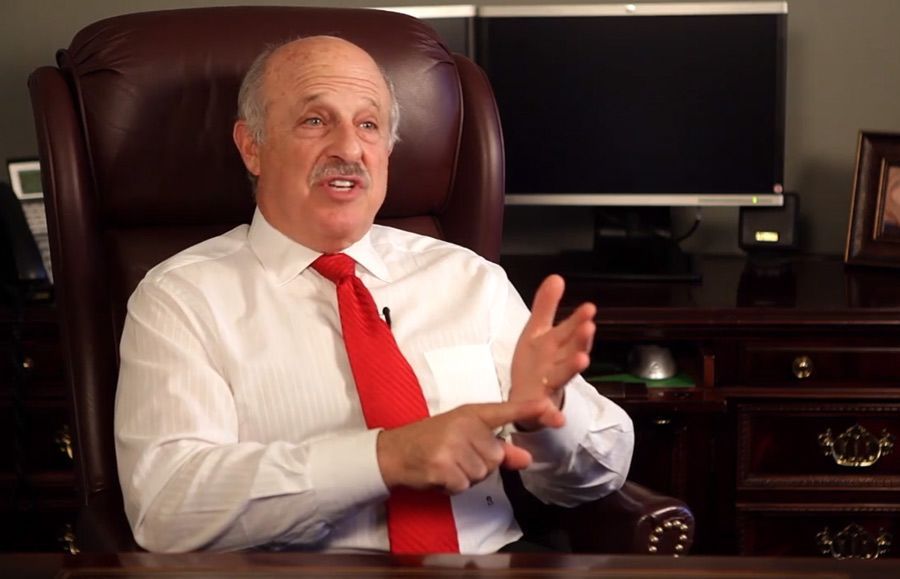 Studies have shown that driving while tired presents as great a danger as driving under the influence of alcohol or drugs. Yes, deposit that fact and federal and state rules regarding truck driver downtime, drivers continue to be under pressure to drive long hours and meet often unrealistic deadlines.
Studies have shown that driving while tired presents as great a danger as driving under the influence of alcohol or drugs. Yes, deposit that fact and federal and state rules regarding truck driver downtime, drivers continue to be under pressure to drive long hours and meet often unrealistic deadlines.
For a free legal consultation, call 516-451-7900
What Are the Federal Truck Driving Regulations About Fatigue?
The Federal Motor Carrier Safety Administration (FMCSA) issues regulations regarding the hours of service that commercial truck drivers can perform.
For property-carrying drivers (that is, those who don’t carry passengers), the limits are:
- 11-hour driving time limit after ten consecutive hours off duty
- Maximum for 14 consecutive hours after coming on duty, following ten consecutive hours off duty. Off-duty time does not extend the 14-hour limit.
- A mandatory 30-minute driving break after eight cumulative hours of driving without a 30-minute break. Drivers may satisfy this requirement with any 30 minutes of non-driving; that is, on-duty not driving, off-duty not driving, in the sleeper berth, or any combination of these taken at one time.
- May not drive after 60/70 hours on duty in seven/eight days; the driver may restart the seven/eight-day period by taking 34 or more consecutive hours off duty.
- Drivers may break up the required 10-hour off-duty periods so long as one off-duty period (in or out of sleeper berth) is at least two hours long, and the other includes at least seven consecutive hours in the sleeper berth. Neither of these periods, when used together, may count against the maximum 14-hour driving window.
- Drivers may extend the 11-hour and 14-hour limits by up to two hours when encountering adverse weather.
- Drivers are exempt from the 11-hour requirement if they operate within a 150 air miles radius of their work reporting location and do not exceed a maximum duty period of 14 hours.
- None of the rules apply if the driver uses the commercial vehicle solely for personal purposes, such as driving to a motel, truck stop, or restaurant, with no commercial benefit to the carrier.
There are various potential penalties for violations of the FMCSA hours of services (HOS) regulations.
They include:
- Law enforcement officials finding HOS violations can force the truck off the road until the driver accumulates enough off-duty time to return to compliance—that is, either 10 or 34 hours.
- Law enforcement officials can assess state and local penalties.
- FMCSA can levy fines on the driver or carrier ranging from $1,000 to $16,000 per violation, depending on the severity of the violation. If the violation involves hazardous materials, the fine can exceed $75,000
- A pattern of violations can downgrade a carrier’s safety rating or a driver’s compliance, safety, and accountability score; the downgrade can trigger penalties, including federal criminal charges for knowing or required violations.
What Are the State Rules About How Long a Trucker Can Drive?
States can enforce stricter regulations regarding truck drivers, or they can adopt the federal standards, which is more common. For example, New York State has adopted the FMCSA regulations regarding commercial truck driver hours of service and logbook requirements.
Click to contact our personal injury lawyers today
Risks of Fatigued Driving
Fatigued or drowsy driving occurs when a sleepy or tired driver chooses to operate a vehicle. It poses serious risks for the driver and others on the road.
When and How Does It Happen?
There is no test to determine if a driver in an accident was sleepy, so researchers generally base the current statistics on the inferences from the accident evidence.
Nonetheless, drowsy driver accidents tend to share the following features:
- The accident occurs during late night/early morning hours or the mid-afternoon
- The impact is likely to be severe
- The accident is usually a single-vehicle accident
- The crash happens on a high-speed road
- The driver did not attempt to avoid a crash
- The driver is alone in the vehicle
Risk Factors for Developing Fatigue
Certain risk factors create a predisposition for fatigued driver accidents.
- Sleep loss from stress, carrier pressure, illness, etc.
- Driving between midnight and 6 a.m.; driving a large number of hours annually, operating in the mid-afternoon, especially for older drivers, and pushing for extended periods without a break
- Use of sedating medications, especially prescribed anxiolytic hypnotics, tricyclic antidepressants, and some antihistamines
- Undetected sleep disorders, especially sleep apnea.
- Consumption of alcohol
Those individuals at highest risk are young men from 16 to 29, shift workers, and people with sleep apnea and narcolepsy.
How Bad Is It?
The National Highway Traffic Safety Administration (NHTSA) estimated that about 100,000 fatigued driver accidents result in approximately 50,000 injuries and 800 fatalities every year. However, the numbers might be much higher given the difficulties in determining whether fatigue was a factor in any given accident.
Complete a Free Case Evaluation form now
Complicated Liability Issues in Commercial Truck Accidents
Accidents involving large commercial trucks also involve significant and complex issues of liability. When such a truck is in an accident, the driver is not the only party potentially liable for your injuries.
Some of the other parties who might be responsible for a portion of your damages are:
- The trucking company is probably the employer of the driver or the owner of the truck or both
- The truck’s manufacturer
- The manufacturer of any parts of the truck that failed in the accident
- Companies servicing and maintaining the truck
- The owner of the cargo
- The loaders of the cargo
- Governmental units responsible for any highway design or construction that may have contributed to the accident
Finding all of the responsible parties not only identifies everyone who owes you compensation but also entities with higher insurance limits than the truck driver alone. This can have a considerable impact on your ultimate settlement or award amount. An experienced truck accident attorney will be far better able than you to solve this maze of potential liability.
Common Injuries in Fatigued Driver Crashes
Fatigued driver accidents are often single-vehicle accidents and show little to no attempt to avoid crashes. However, no matter how many vehicles are involved, injuries in truck accidents tend to be catastrophe and life-changing.
Some of the more common injuries are:
- Traumatic Brain Injuries – The massive force with which a truck injures its passengers and those in any vehicle it strikes can result in individuals being tossed violently around the passenger compartment and striking their heads against parts of the car. This impact can lead to concussions or other trauma caused by the force with which the brain hits the skull’s interior.
- Closed Head Injuries – Closed head injuries are similar to concussions, but they also result from rotational forces from the twisting of the head or the brain moving back and forth inside the skull. This movement can result in tears and bruising, resulting in brain bleeds and dangerous intracranial pressure.
- Spinal Cord Injuries – Again, the force created in an accident involving a big rig truck is such that injuries to the spine, neck, and spinal cord are not uncommon. Whether the injury results in a bruise or tear governs whether the loss of function or sensation will be temporary or permanent, and where the bruise or tear occurs in the spinal column will control how much of the body feels an impact. The higher the injury occurs, the greater the potential loss of function. Thus, damage to the cervical spine can leave the victim with quadriplegia, while a lower injury may only leave the victim with paraplegia.
- Blunt Trauma to the Extremities, Torso, and Rib Cage – Blunt trauma in a truck accident can be highly dangerous and damaging. Fractures and crushing injuries to the limbs can result in so much damage that amputation is required. Blunt force to the torso can injure vital organs and cause internal bleeding that can be fatal within just a few hours if not quickly controlled. Finally, damage to the rib cage can cause a punctured lung, another potentially fatal injury.
- Burns and Disfigurement – Truck accidents often result in explosions and fires, mainly when the cargo includes hazardous materials. As a consequence of these explosions and fires, passengers may become severe burn victims. Burns are extremely painful, slow to heal, requiring much hospital time and surgeries. They are also prone to infection. The patient may be left with extensive disfiguring scarring when the healing is over, which often interferes with movement and motor skills.
What Are Compensable Damages in a Fatigue-Related Trucking Accident?
Most states recognize three compensable damages. Few states cap these damages, but punitive damages are notoriously hard to obtain in most cases.
Economic or special damages are those losses that have a paper trail. That is, they are out-of-pocket losses that injured claimants can prove through an invoice or wage statement. These damages include medical and hospital expenses, loss of current and future wages, rehabilitation, and assistive care for the short term.
Non-economic or general damages are those losses that are more subjective and less susceptible to proof than economic damages. These damages include pain and suffering, emotional distress, loss of consortium, loss of enjoyment of life, damage to a relationship, long-term disability, and disfigurement. Often the victim must obtain expert testimony to establish the extent of the loss.
Punitive damages aim to punish the at-fault party and deter others from engaging in the same harmful conduct. They do not compensate the victim for any particular loss or cost. They require reckless disregard or indifference to the safety of others.
Punitive damages are challenging to get unless you can definitively show the driver drove the truck knowing there was a great chance they might fall asleep. For example, if a truck driver knowingly took sleeping pills and then started driving, punitive damages might be available.
Wrongful Death From Fatigued Driving Accidents
One final, tragic result from some truck accidents is, unfortunately, and all too frequently, a wrongful death. Wrongful death laws vary from state to state, and the following are examples of wrongful death laws in New York.
First, the decedent’s pain and suffering and other expenses from the date of the accident to the date of death are, in effect, made assets of the estate. The estate’s personal representative can file a case seeking those damages on behalf of the state and those who will take from it
Second, the surviving spouse, children, and parents of the decedent and the personal representative can seek damages for the losses that the death has caused them personally. These potential damages include the survivors’ pain and suffering, the loss of companionship with the decedent, the loss of wages and inheritance from the decedent, and similar damages. As a matter of convenience and economy, the cases usually join together.
How a Truck Accident Lawyer Can Help You?
If you or a family member suffered injuries in a collision with a fatigued truck driver, do not spend your time and energy dealing with complex liability and responsibility issues.
A skilled and knowledgeable truck accident attorney will be familiar with the issues in such cases and may even know the insurance companies’ attorneys and adjusters. They will certainly be familiar with the delaying tactics many insurance companies use to wear you down into accepting a settlement offer that may not represent the full compensation you deserve.
When you are vulnerable and have limited emotional and physical energy, you should let a skilled professional become your advocate against the insurance companies. Contact a truck accident attorney today and let them help you recover.
The right law firm will begin investigating and preserving evidence in your truck accident case right away, ensuring that trucking companies do not try to conceal or destroy evidence of hours of service violations. Having help immediately after your accident helps improve your chances of full compensation.








